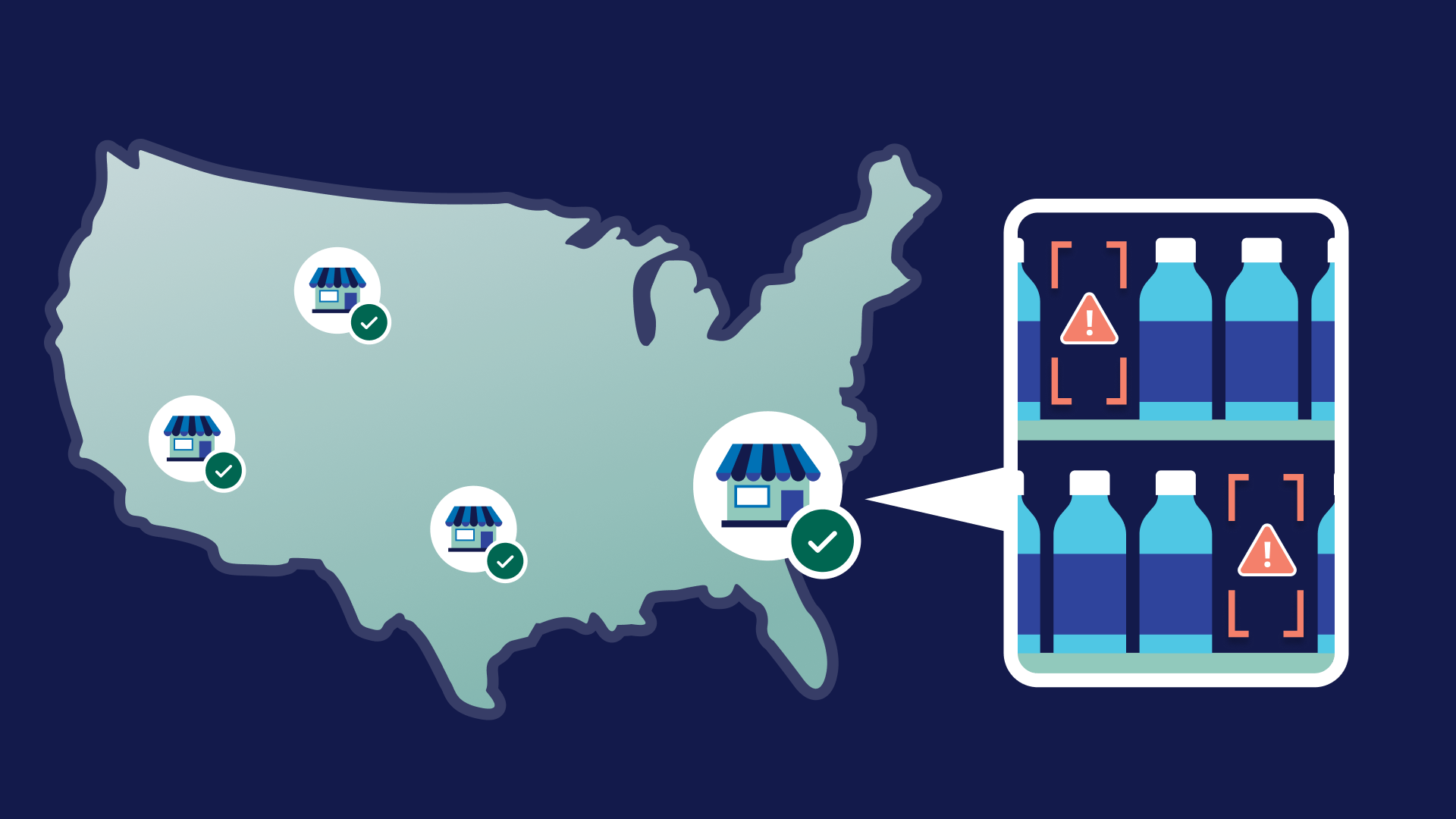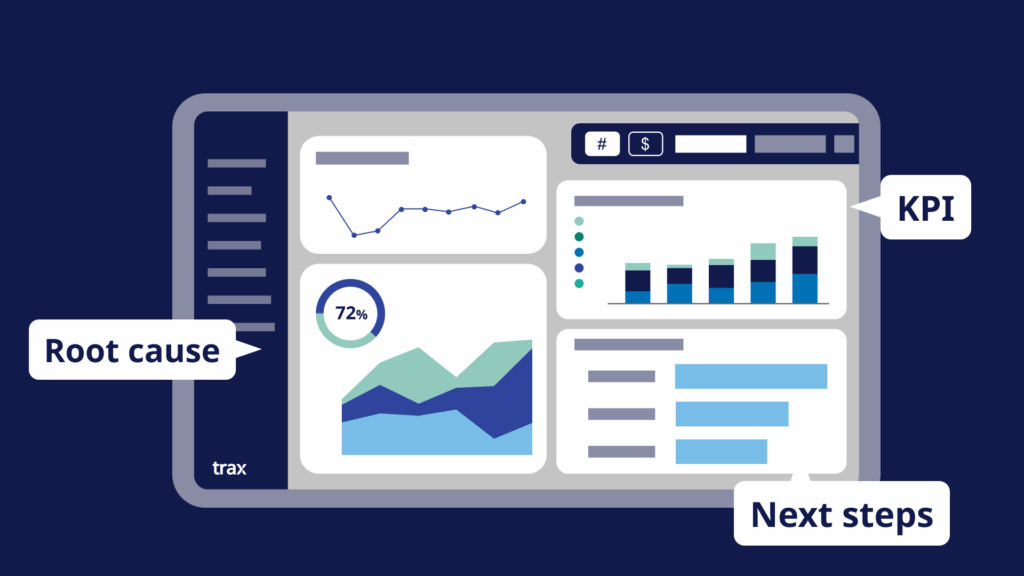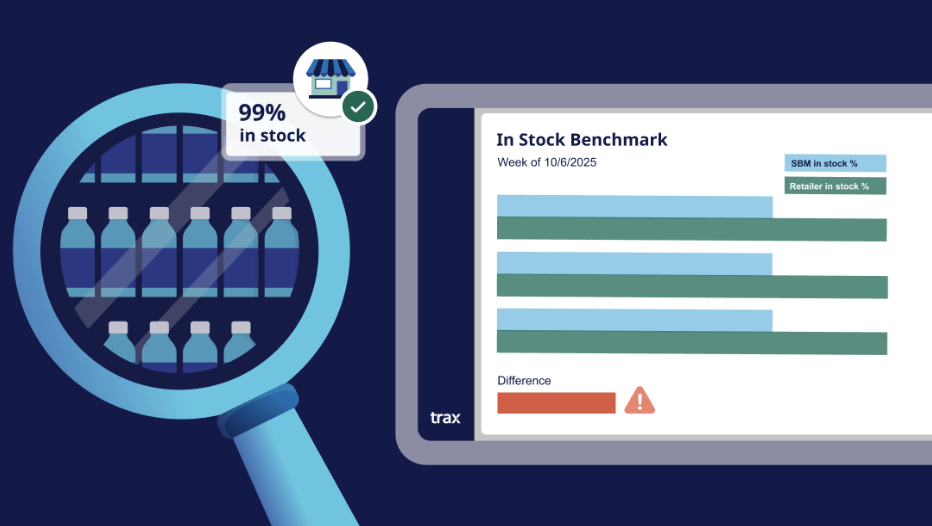The Missing Link in Retail Success
The Missing Link in Retail Success
CPG brands often rely on a fragmented network of data sources to track in-store performance. Sales figures, delivery records, and retailer dashboards offer insights into what was shipped and what sold. But even with all this information, one critical question often goes unanswered:
Was my product available on the shelf when the shopper came to buy it?
This gap between supply chain visibility and actual on-shelf presence is the root cause of untapped sales potential. Trax Retail bridges this gap by adding a comprehensive layer of data that helps both brands and retailers understand what is happening during the moment of truth – when shoppers make a purchase decision at the shelf.
The Blind Spot is in Retail Data
In-store performance is tracked through standardized metrics such as:
- Out-of-Stock % (OOS%)
- In Stock %
- Replenishment In Stock %
These metrics are important as they reflect what is planned, like shipments, demand forecasts, and inventory levels. However, these datapoints may not fully represent shelf conditions in real-time.
Here’s why:

- In-Stock availability doesn’t equal shelf presence: A product may be recorded as in stock in the system, but that doesn’t always mean that it’s on the shelf and easy for shoppers to find.
- Forecasting doesn’t guarantee in-store execution: Metrics based on expected demand or replenishment plans are helpful for planning, but they don’t always verify whether the product was stocked and ready for shoppers to buy it.
- Shopper expectations are high: Today, 57% of shoppers shop in-store due to the importance of consistently in-stock products. When shelf conditions don’t meet that expectation, it leads to lost sales and shopper frustration.
Why Shelf Availability Matters More Than Ever
Shelf availability is the most immediate driver of in-store sales; with 70% of purchase decisions being made at the shelf (1). Even a single missed unit can mean a lost sale, a disappointed shopper, and ultimately a missed opportunity. Brands may know what they sold last week, but without knowing what was missed, they’re flying blind.
Trax’s research has found that:
Brands often overestimate on-shelf presence based on delivery data.
Standard metrics do not detect execution issues, such as items left in backrooms or misplaced displays.
Lack of shelf visibility impacts forecasting, promotion ROI, and field force effectiveness.
Missed sales due to shelf gaps can represent millions in lost revenue annually for category-leading brands.

Trax Signal-Based Merchandising: A New Standard in Shelf Intelligence
To solve this, Trax built a proprietary, real-time shelf availability database that tracks products at the SKU and store level across major retailers on a weekly basis. This enables brands to gain:
- True visibility into what’s happening on the shelf and is available to shoppers.
- Root cause analysis for out-of-stocks, display execution, compliance and supply issues.
- Smarter decision making through integration with existing data systems to provide context and drive smarter decisions.
- Field force enablement, helping teams focus on stores that need attention most.
The centerpiece of this solution is the Signal Dashboard, which delivers:
- Weekly KPIs for in-store execution
- Automated insights on root causes
- Actionable recommendations to close gaps
Brands using the Signal Dashboard have reported improvements in shelf compliance, a reduction in phantom inventory, and faster response times from field teams.

By bridging gaps in visibility, Trax empowers CPG teams to take decisive action:
Marketing can evaluate promotional effectiveness with shelf availability context.
Sales can target underperforming stores and fix systemic issues.
Supply chain leaders can fine-tune forecasts using more accurate shelf-level data.
Retailers can optimize supply chain protocols by leveraging insights to reduce out of shelf instances.
From Fragmented Data to Unified Execution
With Trax, CPG leaders can finally answer:
- Was my product on the shelf?
- If not, why?
- What action should I take next week?
By connecting shelf availability to sales and supply chain planning, Trax drives improved forecasting, targeted store interventions, and higher revenue per visit.
This connected view turns isolated data sources into a single, strategic framework for decision-making. The result? Greater agility, accountability, and alignment across commercial and operational teams.
